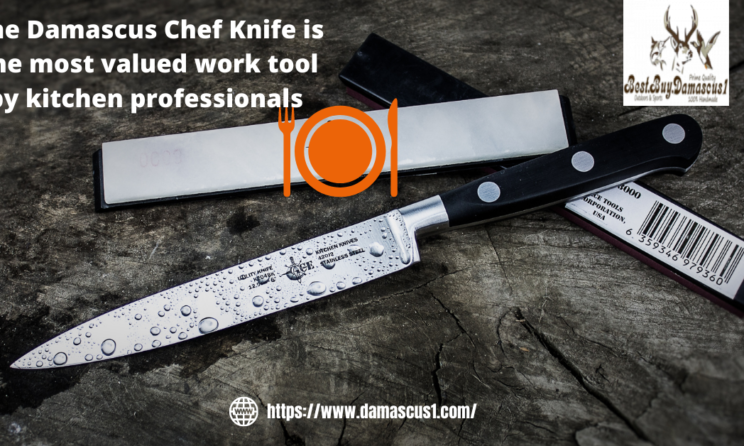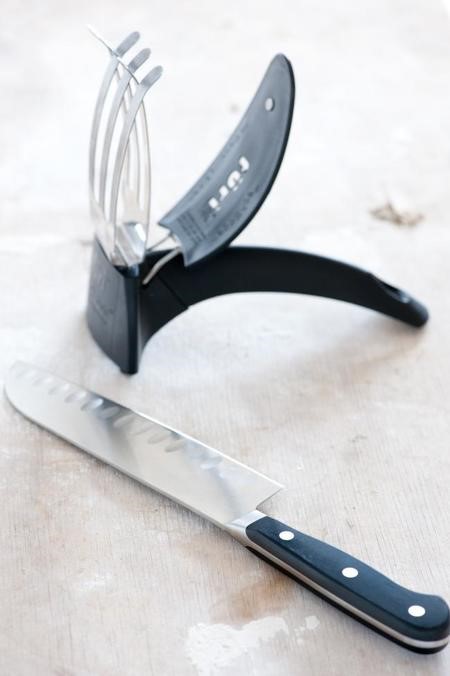
There are many who believe that the Damascus chef knife is an essential instrument on their battlefields, incompatible and even untouchable by other hands than their own. Every cook pampers and cares for his knife with the utmost respect and accuracy since it is his most powerful work weapon. For this reason, many feel strange or uncomfortable using other people’s knives.
These hobbies, peculiarities, or whatever we want to call them, I attribute them to myself as is. I also consider the well-kept and sharp chef’s knife to be the most important item in my kitchen. Without it, it is difficult for me to work properly. For this reason, when they ask me which of all the tools that I use every day I would be above the others, I do not hesitate for a second to answer: my chef’s knife.
How to choose a good Damascus chef knife
Distinguishing a good knife from another that is not so good is not an easy task, but there are a number of characteristics that help to confirm the knife we have in our hands is of quality . And this is noticeable on a day-to-day basis, its functionality makes the task of cooking much easier. From a good to a bad knife there is an abyss or, as it is popularly said, it is night and day. When it comes to getting a good kitchen Damascus chef knife, it is important to pay attention to the following.
The quality of the steel
This may be the most important factor . I recommend that you look for kitchen knives whose blades are made of high quality forged special steel. This steel is composed of 15% chromium-molybdenum-vanadium. This guarantees optimum sharpening, greater stability, resistance to corrosion and a great consistency of cut.
Head
This is the part that joins the blade of the knife with the handle. Its main use is to protect the fingers, preventing them from slipping towards the blade. A good, solid and comfortable head allows you to work safely , guaranteeing a firm grip and, thus, avoiding cuts and accidents.
Joints between pieces
In relation to the previous point, it is very important that the joints between the blade, the head and the handle are not noticeable . This factor ensures proper hygiene of our knives and, therefore, of our elaborations. There are knives that are made of a single piece, with which this problem is eliminated at the root.
Balance and comfort
The size and weight of the knife must be adapted to our constitution and strength. Buying the biggest kitchen knife in the store is not going to make us better cooks. On the contrary, they can hinder your hand to a great extent so it is important to choose wisely the one that best suits our needs . An ergonomic handle, as well as a balance between blade and handle of the knife, facilitate the work considerably.
How to take care of our chef’s knives
Cleaning
Although the chef’s knife can be washed in the dishwasher, it is best to do it by hand , under running water, after each use and dry them immediately. In this way it will last us longer and in better conditions.
Conservation
Yes we can avoid it, we should not keep them in a drawer, since the sheets can collide with each other and be damaged. A safe place to store knives is a wooden rack or, alternatively, a magnet attached to the wall in which they are stored. The knives will be in order and always at hand .
Cutting tables
Sharp knives are very delicate and using inappropriate cutting boards can damage them. It is advisable to use quality boards made of wood, bamboo or synthetic material , which protect the blade of the knife and allow you to cut, chop and chop with ease.
Sharp
Even high-quality knives become dull with use and have to be sharpened again. There are useful, good, and easy-to-use homemade sharpeners with which to regain sharpening when needed . However, a professional sharpener should give them a pass once a year to keep them in their best condition.
What are the parts of the chef’s knife and what are they for?
- The tip . It is its upper end, pointed in shape. It is used to pierce and puncture food. It is an important part of the knife.
- The blade . It constitutes the main part of the knife. Its size, shape and strength vary depending on its use.
- The cutting edge . It is the sharp edge of the knife blade and the part that works the hardest when we mince, laminate, fillet, chop, etc. It is important that it is always kept sharp.
- The recazo . It is the part opposite to the edge of the knife or the top of it. It serves as a support when you need to apply extra force to the task we are doing, such as chopping foods that are harder than normal (for example, nuts).
- The head . It is the part of the blade closest to the handle and the one that offers the greatest safety during cutting.
- The ferrule . It is the narrowing and thickening of the blade by the part closest to the handle, with which the knife is balanced.
- The hips . The two parts that make up the handle are thus called.
- Rivets . They join the handle to the shank and ensure a solid structure.
- The spike . Extension of the blade that runs internally throughout the handle. Provides weight, stability and balance to the knife.
The grips, rivets and tang make up the handle of the knife .

Other types of knives
There are many types of knives, depending on the use to which they are to be given: onion, lace, saw, boning, etc. If you are curious to know what they are and how each of them is used, I recommend that you read the entry What knives do we need in the kitchen? , from our colleague Pintxo, to document you in-depth.




